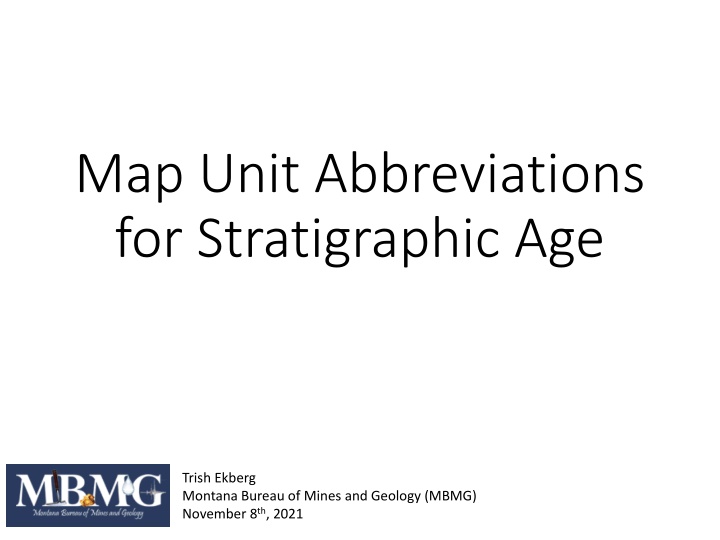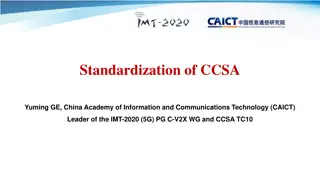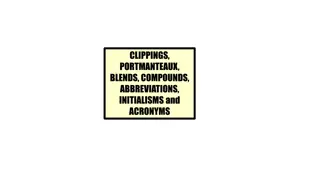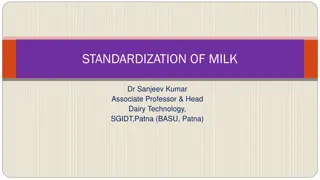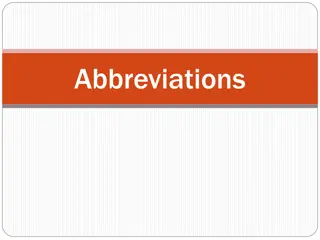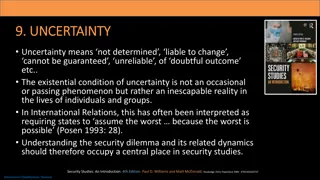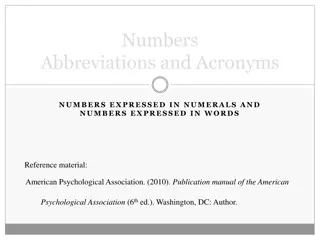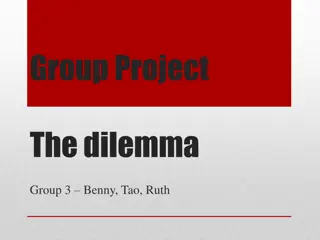Stratigraphic Age Abbreviations Standardization Dilemma
In the field of stratigraphy, the issue of standardizing age abbreviations poses challenges and options. The dilemma ranges from using special characters to letting authors choose abbreviations for each project. Options also include not using age identifiers or standardizing abbreviations, which may lead to conflicts. The decision-making process involves balancing technical accessibility and traditional practices. The exploration of these options seeks to find a balanced approach in representing geological time periods consistently across maps and projects.
Download Presentation

Please find below an Image/Link to download the presentation.
The content on the website is provided AS IS for your information and personal use only. It may not be sold, licensed, or shared on other websites without obtaining consent from the author.If you encounter any issues during the download, it is possible that the publisher has removed the file from their server.
You are allowed to download the files provided on this website for personal or commercial use, subject to the condition that they are used lawfully. All files are the property of their respective owners.
The content on the website is provided AS IS for your information and personal use only. It may not be sold, licensed, or shared on other websites without obtaining consent from the author.
E N D
Presentation Transcript
Map Unit Abbreviations for Stratigraphic Age Trish Ekberg Montana Bureau of Mines and Geology (MBMG) November 8th, 2021
Guidance from GeMS about MapUnit field: p. 12 p. 15 p. 17 p. 19
What to do? Option 1 just use the special characters technically * _ } etc are ASCII (shift-key accessible) not very easily understood not traditional use Option 2 let authors pick for each map/project Age abbreviations are explained in DMU table Might result in adjacent maps not using the same map unit abbreviation for the same unit (okay according to USGS suggestions to Authors) https://pubs.usgs.gov/unnumbered/7000088/sta08.pdf p. 11
What to do? Option 3 Not use age identifiers Only represent lithology in the MapUnit field Could also be done with formal names pc Tertiary Pine Creek sandstone Common with man-made materials Keeps age information only in Age (DMU table) and Label field (DMU and MapUnitPolys table) Not in line with USGS Suggestions to Authors Not traditional use?
Option 4 standardize age abbreviations .not so easy All Caps or mix of capital and lower-case? Mixed case If Map Unit = Trg Tertiary rhyolite granite (Trg)? Triassic granite (Trg)? This example issue is solved if you use capital letters to represent age Tertiary rhyolite granite (Trg) Triassic granite (TRg) All-caps Second letter may conflict with other abbreviations example abbreviation for Cambrian C already used for Carboniferous could use CA for Cambrian, but t A represents Archean cant use CM for Cambrian, conflict: Cambrian rock (CMr) Cambrian to Mississippian rock (CMr) CB for Cambrian makes no conflict
Took a stab at Option 4 (standardize abbreviations) Asked Gitter members to weigh in
To Do: Can we all agree on age abbreviations? Each survey uses their own system? What ages to include? All Subdivisions? Anthropocene too? How are people using the Label field?
How are people using the Label field? All Text formatting tags Tags only for special characters No tags, but note in metadata about using FGDC GeoAge font for Label field
